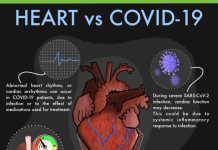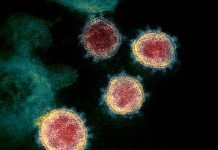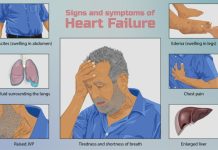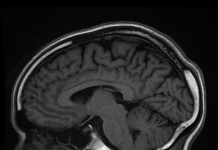The infection fatality rate (IFR) is more reliable indicator of the extent of the infection. In this study, the researchers found the actual infection rate for COVID-19 in Heinsberg to be five-fold higher than the number officially reported using testing.
After community transmission of COVID-19 commences, there usually are good number of undiagnosed and unconfirmed cases in the community. This is because only symptomatic cases and those detected as a result of contact tracing report to hospitals or clinics for confirmation by testing. Unconfirmed cases are like hidden iceberg not factored in planning. Therefore, the need for a clear idea of true frequency or rate of infection has been felt by the planners for some time to ensure effective control measures.
Unlike case fertility rate (CFR) which gives an idea of mortality with respect to the number of only those cases which are confirmed by laboratory tests, the infection fatality rate (IFR) gives an idea of mortality with respect to total number (confirmed plus hidden) of people actually infected by the virus. IFR thus is a direct measure of total extent of prevalence of the disease in the community.
The case fatality rates (CFR) reported for COVID-19 vary significantly between countries for example, UK (15.2 %), Italy (13. 7 %), Spain (10.2 %), USA (5.7 %), China (5.6 %), India (3.2 %) etc. There could be multiple reasons for this variation in the rates but the key thing is that CFR is not a good measure of the extent of infection in the community. Furthermore, the symptoms of the disease vary too widely from asymptomatic to very severe illnesses.
Hence, the infection fatality rate (IFR) seems to be a more reliable indicator of the extent of the infection that could help in better planning of the control measures and forecasting the consequences of COVID-19.
The researchers of the University of Bonn have, for the first time, reported determination of infection fertility rate (IFR) for COVID-19 in Heinsberg, a district of North Rhine-Westphalia in Germany which had become a hot spot following a celebration. Nicknamed Heinsberg Study, the findings have been uploaded to pre-print server awaiting peer review.
The researchers found the actual infection rate in the community to be five-fold higher than the number officially reported using testing. No correlation was observed between age and sex of the infected individuals.
These findings may not be representative for the world population, but the novelty of this study is that IFR for COVID-19 in a community has been determined for the first time which paves the way forward for a better understanding of the COVID-19 pandemic.
***
Sources:
1. Streeck H., Schulte B., et al 2020. Infection fatality rate of SARS-CoV-2 infection in a German community with a super-spreading event. Pre-print. University of Bonn. Posted 05 May 2020. Available online at https://www.ukbonn.de/C12582D3002FD21D/vwLookupDownloads/Streeck_et_al_Infection_fatality_rate_of_SARS_CoV_2_infection2.pdf/%24FILE/Streeck_et_al_Infection_fatality_rate_of_SARS_CoV_2_infection2.pdf Accessed on 06 May 2020.
2. Universit채t Bonn, 2020. News. Bonn-based research team determine COVID-19 infection fatality rate. Posted 05 May 2020. Available online at https://www.research-in-germany.org/news/2020/5/2020-05-05_Heinsberg_Study_results_published.html Accessed on 06 May 2020.
3. Condit R., 2020. Infection Fatality Rate – A Critical Missing Piece for Managing Covid-19. Posted on 5 April 2020. Virology Blog. Available online at https://www.virology.ws/2020/04/05/infection-fatality-rate-a-critical-missing-piece-for-managing-covid-19/ Accessed on 06 May 2020.
***




































